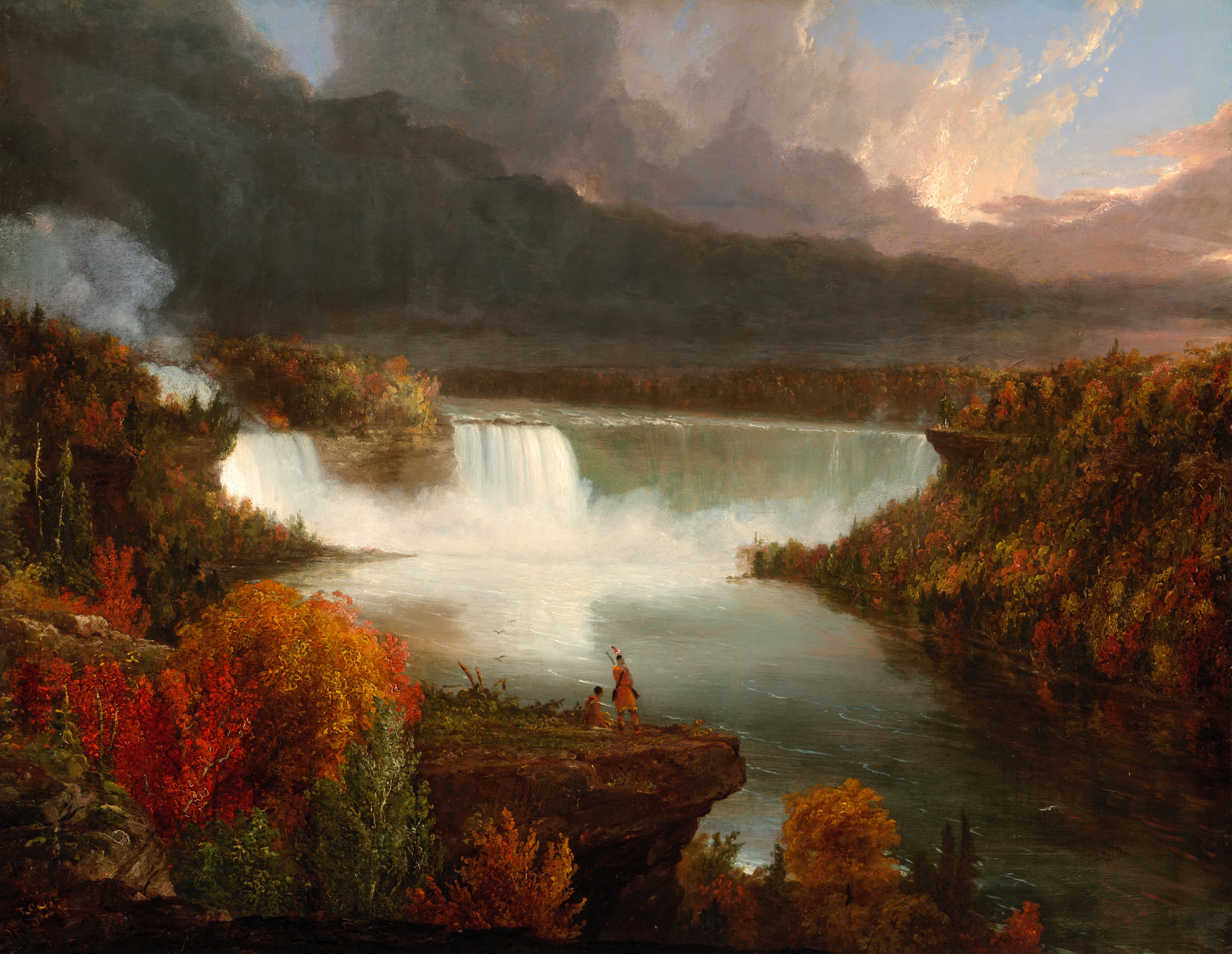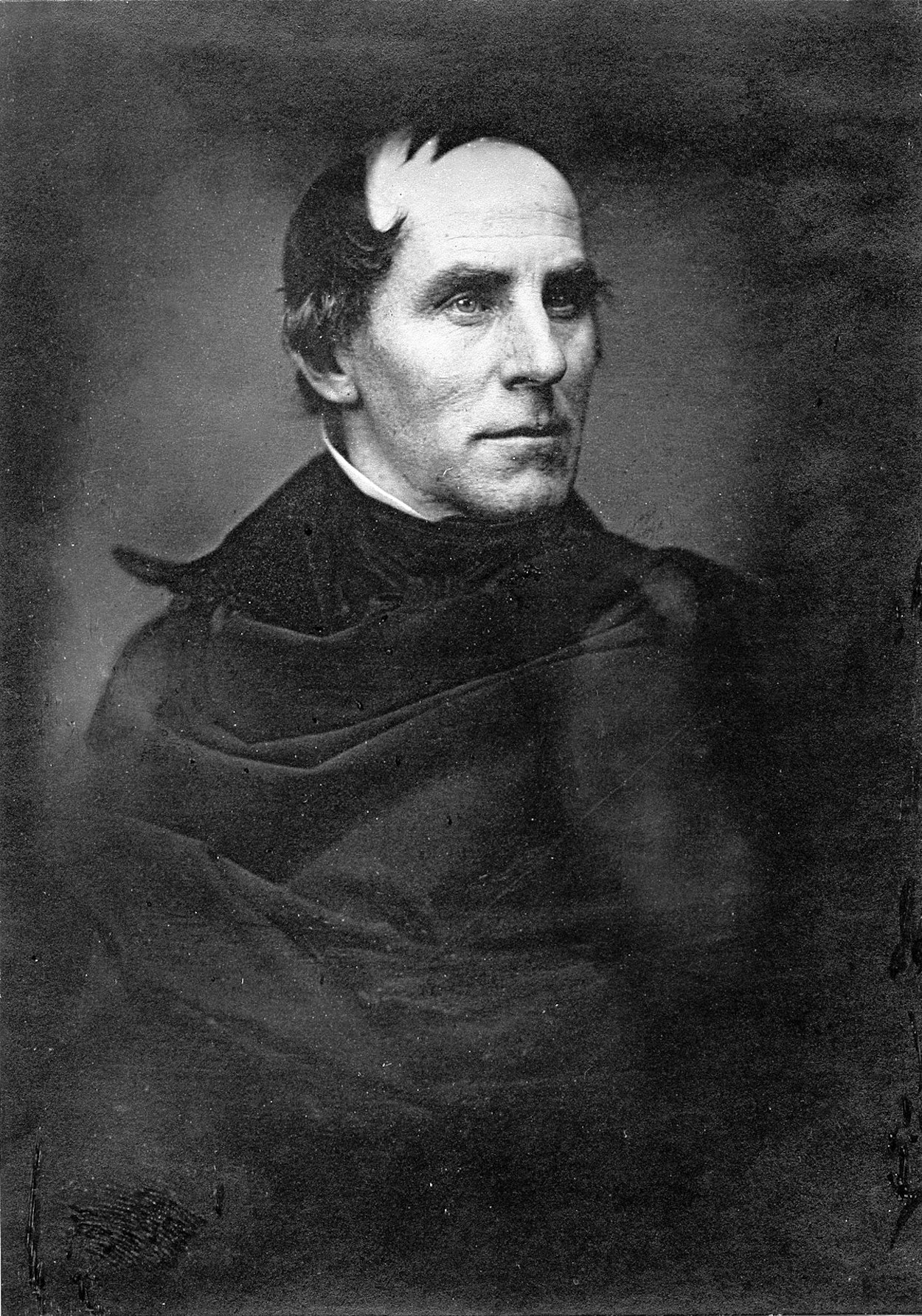Thomas Cole was an English-American painter known for his landscape and history paintings. He is regarded as the founder of the Hudson River School, an American art movement that flourished in the mid-19th century. Cole visited Niagara Falls in May 1829, and composed this romanticized, autumnal scene the following year. Why was it romanticized? Portraying the grandeur of the American landscape, the artist omitted the factories, scenic overlooks, and hotels that populated the area in the early 19th century. Cole expressed concern about the environmental impact of voracious industrialism, but at the same time his painting erased the human devastation wrought by colonialism and conquest in the region, which encompassed Attiwonderonk, Haudenosaunee, and Wenrohronon lands. The two Native American figures at center, combined with the falls, identify the setting as North America, but their diminished presence in scale and number reinforces the false idea of the “vanishing Indian” and is meant to signal impending transformation rather than acknowledge their stolen sovereignty.
Dear DailyArt users, we need to ask for your support. We want to develop a new version of the DailyArt app. Please help us to collect $100,000 to make it. You can learn more about the whole crowdfunding campaign.
P.S. The Hudson River School was not only a boy's club! Meet 6 female artists that belonged to the art movement.


 Thomas Cole
Thomas Cole